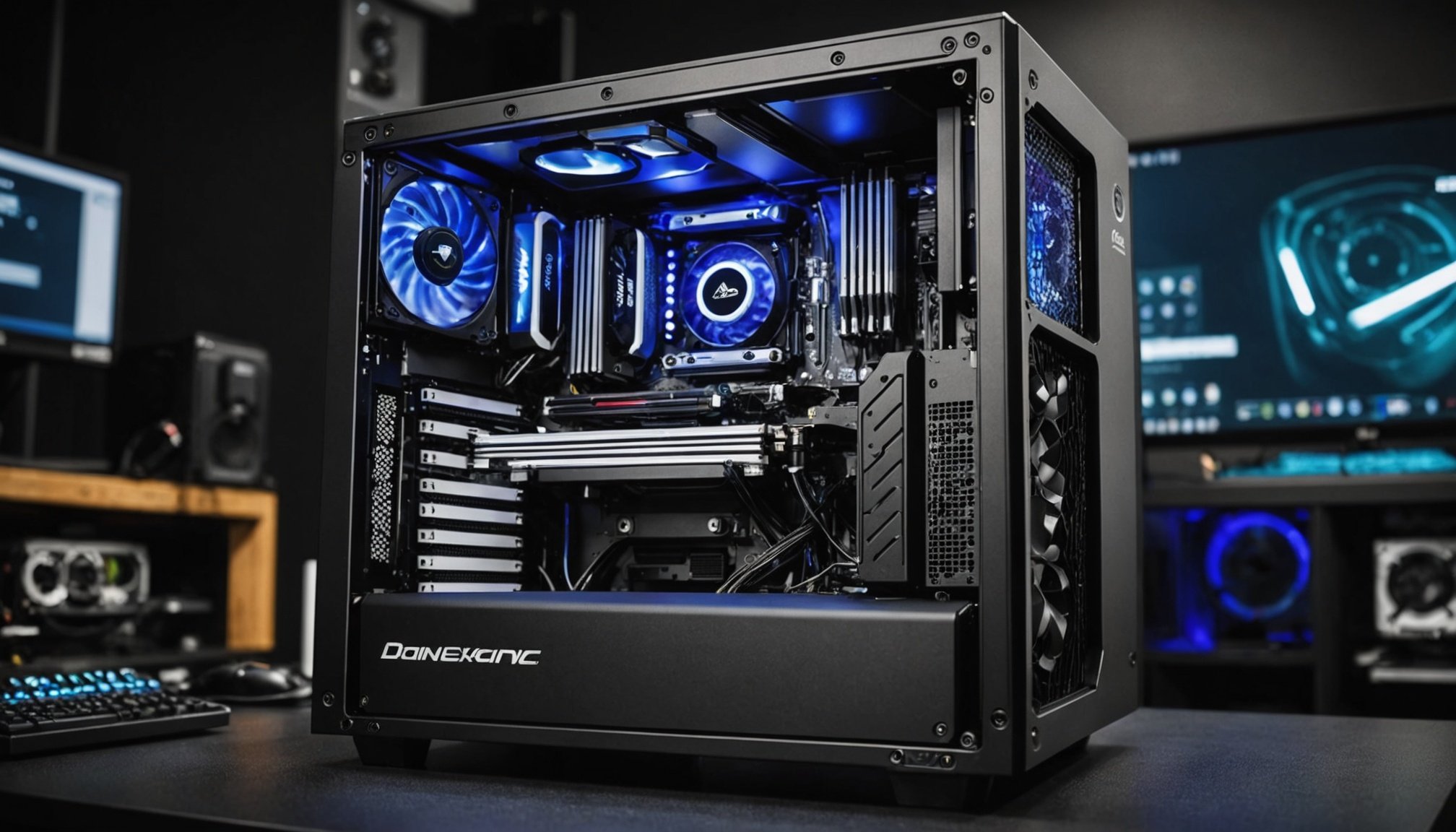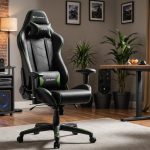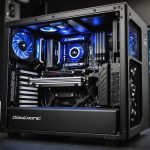H2 – Understanding Gaming PC Components
Building a gaming PC involves selecting the right components to ensure optimal performance. Key parts include the CPU, GPU, RAM, and storage. These elements collaborate to offer the power and capacity needed for high-demand gaming.
Choosing a suitable CPU and GPU is vital, as they act as the PC’s brain and graphical powerhouse. Ensuring the internal parts are compatible with the motherboard is crucial. The motherboard should match the chosen CPU socket type and support the desired RAM. Additionally, the physical dimensions of the motherboard must fit within the case, a consideration often overlooked.
Also read : How do video game makers keep their creations bug-free and smooth-running?
Compatibility and upgrade potential should influence the initial choice. Future-proofing by opting for parts that can handle evolving software demands can save time and money. This strategy ensures that the gaming PC remains relevant for more extended periods.
Selecting components with versatility allows for easier upgrades and modifications. This approach caters to increasing performance needs and trends in PC hardware, allowing the user to enjoy a custom-built gaming experience that evolves over time. Understanding and strategically choosing these fundamental components ensures a robust gaming foundation.
Topic to read : Discover the benefits of gaming chairs for marathon gaming sessions
Selecting the Right Components
Choosing the right components for a gaming PC is essential for tailoring performance to your specific needs and ensuring you make informed decisions. When selecting the CPU, consider its role as the central processing unit, balancing speed and core count to meet your gaming demands. Similarly, selecting the GPU involves understanding your desired graphical performance level, as it significantly impacts visual fidelity in games.
RAM plays a crucial role in the smooth execution of games by providing temporary data storage for quick access. More RAM generally equates to better multitasking and faster loading times. Storage choices hinge on understanding the differences between SSD and HDD. Solid-State Drives offer faster data retrieval, enhancing system boot times and game load speeds, whereas Hard Disk Drives provide more extensive storage for larger game libraries at a lower cost.
Future-proofing your build includes choosing parts that allow for seamless upgrades. Ensure that each component aligns with your motherboard’s specifications and avoid excess expenditure by selecting parts only necessary for your performance goals. Emphasising versatility and forward-compatibility in your choices will help keep your gaming PC competitive with future software advancements.
Compatibility and Assembly Preparation
Creating a high-performance gaming PC demands meticulous preparation and thoughtful planning. Ensuring PC compatibility involves a series of deliberate steps and checks that are fundamental to a smooth building process. Firstly, verify each component’s compatibility by consulting detailed guides and reputable online resources that outline specifications and requirements. This helps to confirm that your PC hardware functions harmoniously, reducing the likelihood of errors during assembly.
The process begins long before assembly with the collection of necessary tools—such as screwdrivers, antistatic wristbands, and thermal paste. These tools facilitate the secure and precise installation of PC parts, aiding both in initial setup and future upgrades. A clean workspace is indispensable, as it safeguards components from static damage and misplacement. Organising parts and tools logically ensures efficiency and minimises potential assembly frustrations.
In the context of building setup, attention to detail is paramount. Clear labelling of cables and components can mitigate confusion, ensuring each part finds its respective position with ease. Establishing a structured and prepared work environment sets the stage for a seamless assembly journey, culminating in a carefully tailored and powerful custom PC.
Assembly Process
Building a gaming PC involves a precise assembly process to ensure all components function optimally. Begin by gathering your components and preparing your work area. Having a clean and organised space is crucial for efficient assembly.
Installing the CPU and RAM
First, carefully install the CPU by aligning the notches on the CPU with the socket on the motherboard. Secure it in place with the locking mechanism. Next, add the RAM by inserting it into the DIMM slots, ensuring they click into place.
Mounting the Motherboard
With the CPU and RAM in place, proceed to mount the motherboard in the case. Align the screw holes and secure it using the screws provided with your case.
Adding the Power Supply
Place the power supply in its designated spot, typically at the bottom or top of the case. Secure it firmly and ensure the cables are easily accessible for later connection.
Finally, connect the GPU and any additional components, like storage drives, using the appropriate slots and connectors. This methodical approach ensures a seamless assembly and a high-performing gaming PC.
Software Installation and Configuration
Once your gaming PC is assembled, the next crucial step is software installation to bring your machine to life. Begin with installing the operating system, usually from a bootable USB drive. Insert the drive, boot the PC, and follow on-screen instructions to complete the installation.
During this process, it’s imperative to install necessary drivers to ensure all components function correctly. Visit each manufacturer’s website for the latest drivers for your CPU, GPU, and motherboard. Accurate driver installation can greatly enhance system stability and performance.
Configuring the BIOS is essential to squeeze the most out of your hardware. Access BIOS using the designated key during boot-up, and adjust settings like boot order and power management. BIOS settings can influence system stability and gaming performance.
Once the OS and drivers are set, explore and install essential gaming platforms like Steam or Epic Games. These platforms give you access to a myriad of games fitting various tastes. Equipping your gaming PC with the right software not only maximises its potential but also elevates your gaming experience to new heights.
Troubleshooting and Optimization Tips
Constructing a gaming PC can sometimes lead to unexpected hurdles, but understanding common issues can ease the process. For instance, if the PC fails to boot, confirm that all connections are secure and power cables are correctly attached. Check for BIOS updates, as outdated versions might lead to compatibility problems, particularly with newer PC hardware.
Performance concerns can often be addressed by adjusting settings within your favourite games or using software utilities like Game Booster to optimize settings automatically. Reducing unnecessary background processes can free up resources, enhancing gaming performance.
Regular maintenance, such as keeping your system free of dust and ensuring adequate airflow, is crucial. Dust can clog fans and impede heat dissipation, leading to overheating issues. A clean inside assists longevity and sustained performance.
For efficient optimization, look into overclocking tools provided by manufacturers, but proceed with caution. Always monitor temperatures to prevent hardware damage. Adapting system settings, keeping drivers updated, and running system diagnostics regularly can mitigate most issues, ensuring your gaming PC remains in peak condition. These steps facilitate a smoother experience and prolong the lifespan of your custom build.
Future Upgrades and Customization
Enhancing your gaming PC through upgrades and customization provides opportunities for improved performance and aesthetic appeal. Staying updated with tech trends is crucial in identifying the right time for upgrades.
When to Consider Upgrades
Consider upgrading components when your PC hardware struggles to run the latest games or software efficiently. Upgrades should aim to tackle any performance bottlenecks, such as swapping the GPU or adding more RAM, thereby boosting overall gaming capability.
Popular Upgrade Paths for Gaming PCs
The GPU, being central to gaming performance, is often a top upgrade priority. Adding a faster CPU or upgrading to a larger capacity SSD can significantly reduce loading times. Enhanced cooling solutions, like liquid cooling, can accommodate overclocking, unlocking additional performance gains.
Customization Options for Aesthetics and Functionality
Personalising your rig through custom build options can reflect your style while also increasing functionality. Options include custom RGB lighting, windowed cases, and cable management enhancements, which contribute to both aesthetics and improved airflow.
Remaining aware of emerging trends ensures that your PC not only meets current demands but remains adaptable to future advancements, allowing for a versatile and tailor-made gaming experience.











